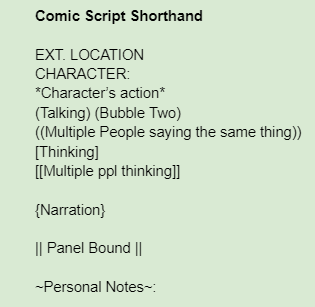In light of world news, my own health, and the general busy-ness that the end of the year heralds, updating my blog feels like a particularly pointless endeavor. But the crux of any real habit is that sometimes you don’t want to do it. And discipline is doing it anyway.
So here I am, back after a two-week break to talk about what I’ve been up to when I’m not calling my representatives.
When In Doubt, Write
I’m a writer first and foremost. It comes to me far easier than drawing, and has been my coping mechanism far longer. Thanks to that I’ve been able to get quite a bit of writing done over the past few weeks.
I’m not a NaNoWriMo adherent, but in the spirit of the season I’ve been putting in at least an hour of concentrated writing per day. This isn’t limited to just my main projects, it’s an hour of writing about whatever I want.
I’m pretty happy to report that I’ve made some great strides in some projects that I haven’t yet disclosed. The future is looking interesting. I’m not yet ready to commit to “good”. I’m definitely hoping to maintain this momentum. Worry not, I am long winded enough on blogs so I’m not going to aim for 50k words in a script. I am merely aiming to get most of ID rough-scripted by the end of the month. It’s a pretty big – but doable- goal.
Comic Shorthand
Another small win has been a breakthrough in my flow. Previously, I mentioned I used Dubscript to work on my comic script. While it is great for final formatting, it is still a scripting application made for-well- normal scripts.
There is no single standardized method for creating comic scripts, even for multi-person production teams. Scrivener boasts a couple of templates: One is based on older practices while another is made to (hopefully) become the more accessible standard. Both of these templates are pretty similar in layout and purpose: to transfer ideas from writer to art team with as little loss of fidelity as possible.
A noble pursuit. But again, not for me. What I needed was something faster and less formal. I needed a process that matched my typing speed. I needed something I could edit in analog.
What I needed was a shorthand.

So of course I made one.
I won’t yet call it perfect, but it has already paid dividends in my script process. The main benefit being that setting and moving panels only requires a few keystrokes. This is essential when I’m working on my phone or tablet keyboard.
Is it beautiful? No. In practice it reminds me of iambic pentameter worksheets from high school. But it works so far. Here’s an example:

Page break notation is still being debated.
Perhaps one day when I’m a world famous comic author there will be some merit behind this madness. Until then it’s simply another attempt to fit the process to the person. I don’t have any lofty intentions, but if you have stumbled upon this blog and decide to try it yourself, let me know how it goes!
fatcr0w is a hobbyist artist with a passion for comics and illustration. They take on too many projects and don’t know when to shut up. It is with great optimism that they believe one day this blurb will be more interesting.